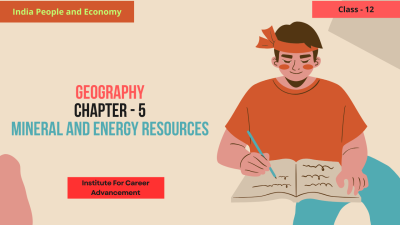Human Geography - Class 12
Human Geography is the study of how humans interact with and modify their environment. In Class 12, you delve deeper into understanding the complex relationship between people and the earth. Key Focus Areas: Population: Analyzing population growth, distribution, and its impact on society and resources. Settlement: Studying the evolution of human settlements, from rural to urban areas, and their characteristics. Economic Activities: Exploring different economic sectors (primary, secondary, tertiary) and their spatial distribution. Human Development: Examining factors influencing human development and inequalities across regions. Resource Management: Understanding the importance of sustainable resource utilization and conservation. Essentially, Human Geography in Class 12 helps you grasp how human actions shape the world around us and the challenges we face in creating a sustainable future. মানব ভূগোল হল মানুষ কীভাবে তাদের পরিবেশের সাথে যোগাযোগ করে এবং পরিবর্তন করে তার অধ্যয়ন। দ্বাদশ শ্রেণিতে, আপনি মানুষ এবং পৃথিবীর মধ্যে জটিল সম্পর্ক বোঝার জন্য আরও গভীরভাবে অনুসন্ধান করেন। মূল ফোকাস ক্ষেত্রঃ জনসংখ্যাঃ জনসংখ্যা বৃদ্ধি, বন্টন এবং সমাজ ও সম্পদের উপর এর প্রভাব বিশ্লেষণ করা। বসতি স্থাপনঃ গ্রামীণ থেকে শহুরে অঞ্চলে মানব বসতির বিবর্তন এবং তাদের বৈশিষ্ট্যগুলি অধ্যয়ন করা। অর্থনৈতিক ক্রিয়াকলাপঃ বিভিন্ন অর্থনৈতিক ক্ষেত্র (প্রাথমিক, মাধ্যমিক, তৃতীয়) এবং তাদের স্থানিক বিতরণ অন্বেষণ করা। মানব উন্নয়নঃ মানব উন্নয়ন এবং অঞ্চল জুড়ে বৈষম্যকে প্রভাবিত করে এমন কারণগুলি পরীক্ষা করা। সম্পদ ব্যবস্থাপনাঃ টেকসই সম্পদ ব্যবহার ও সংরক্ষণের গুরুত্ব বোঝা। মূলত, দ্বাদশ শ্রেণির মানব ভূগোল আপনাকে বুঝতে সাহায্য করে যে মানুষের ক্রিয়াকলাপ কীভাবে আমাদের চারপাশের বিশ্বকে রূপ দেয় এবং একটি টেকসই ভবিষ্যত তৈরিতে আমরা যে চ্যালেঞ্জগুলির মুখোমুখি হই।
English
Last updated
Wed, 27-Nov-2024



















